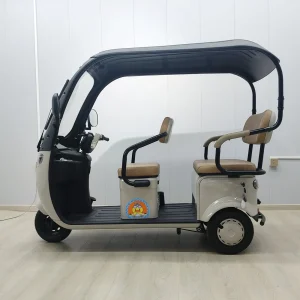Introduction
As China’s new energy vehicle (NEV) industry enters a new development stage, a wave of technological innovation and industrial transformation is reshaping its future. According to industry insights, 2025 China New Energy Vehicle Trends will mark a pivotal year when electrification, intelligent connectivity, and diversified power solutions converge.
From the perspective of Tairui, a pioneer in low-speed and micro electric vehicles, this article explores the key directions, challenges, and opportunities behind this industrial shift.

I. Overview: Integration and Diversification Lead the Way
1.1 Diverse Powertrain Pathways
While battery electric vehicles (BEVs) have dominated the past decade, plug-in hybrids (PHEVs) and range-extended electric vehicles (EREVs) are rapidly gaining ground. By 2025, these models are expected to account for nearly half of the market—creating a dual-path scenario in the 2025 China New Energy Vehicle Trends.
This multi-route strategy not only broadens consumer options but also strengthens energy resilience, especially in regions with limited charging infrastructure.
1.2 Intelligent Upgrades Drive New Competition
2025 is projected to be the breakthrough year for smart vehicle technology. Advanced driver-assistance systems (ADAS), L2+ autonomous features, and AI-based driving models are becoming mainstream. With large AI models like DeepSeek entering vehicle applications, cars are evolving into intelligent mobile terminals.
This transformation aligns with broader electric mobility trends, emphasizing safety, user experience, and efficiency.
1.3 Building a Connected EV Ecosystem
The 2025 China New Energy Vehicle Trends highlight the growing importance of ecosystem collaboration. From upstream battery materials and manufacturing to downstream charging, recycling, and data management, a connected EV ecosystem is taking shape.
The integration of automotive, energy, and communication sectors will accelerate the transition toward intelligent, sustainable mobility.
II. Key Technologies Powering the Transition
2.1 Battery Innovation and Energy Management
Breakthroughs in solid-state batteries, silicon-carbon anodes, and high-energy-density cells are setting the foundation for next-generation vehicles. Meanwhile, ultra-fast charging and liquid-cooled systems are becoming industry standards.
These advancements strengthen the technical core of the 2025 China New Energy Vehicle Trends, ensuring longer range, improved safety, and higher efficiency.
2.2 AI and Computing Power in Smart Driving
Artificial intelligence is redefining how vehicles are designed, built, and driven. From predictive algorithms to real-time navigation and adaptive energy control, vehicles are becoming cognitive machines.
For Tairui, integrating simplified yet reliable smart modules into low-speed EVs provides a practical approach to innovation, balancing functionality and affordability within the automotive innovation landscape.
2.3 Charging Infrastructure and New Energy Solutions
By late 2024, China had installed over 12.8 million charging units nationwide, with highway service stations achieving near-total coverage. Enhanced charging accessibility and smart grid integration are crucial to scaling up smart vehicle technology and making EV ownership more convenient.
III. Challenges Along the Road to Transformation
3.1 Cost, Efficiency, and Mass Production Barriers
High-end materials, intelligent hardware, and advanced algorithms remain expensive, with unstable yields. Without large-scale production and cost optimization, innovation cannot achieve mass-market success.
For Tairui, managing the balance between technology performance and commercial feasibility is a core strategic challenge.
3.2 Regulatory Alignment and Safety Standards
The rollout of intelligent driving and autonomous systems faces uneven global regulations. Inconsistent standards for battery safety, data protection, and system validation may slow the realization of the 2025 China New Energy Vehicle Trends.
Continuous dialogue among policymakers, manufacturers, and tech developers will be critical to align safety and innovation.
3.3 Cross-Sector Collaboration Bottlenecks
A truly functional EV ecosystem requires seamless integration among industries—energy, AI, IoT, infrastructure, and logistics. Delays in one link can affect the entire value chain.
As Tairui develops, collaboration with energy companies and digital mobility platforms will be vital to accelerate scalable ecosystem solutions.
IV. Tairui’s Strategic Position in the New Energy Landscape
4.1 Targeting Urban and Community Mobility
Amid fierce competition in large-scale EV segments, Tairui focuses on compact electric vehicles designed for urban commuting, resort mobility, and community transport.
These use cases prioritize flexibility, affordability, and convenience—making them a key niche within the 2025 China New Energy Vehicle Trends.
4.2 Modular and Upgradable Architecture
Tairui’s modular vehicle design integrates interchangeable battery systems, smart controllers, and OTA (Over-the-Air) software upgrades. This allows owners to enjoy continuous performance improvement without replacing hardware—an approach aligned with the evolution of electric mobility trends.
4.3 Ecosystem Integration and Service Innovation
Beyond vehicles, Tairui aims to build a connected mobility ecosystem combining transport, charging, and community services. Through partnerships with utility providers, and smart city initiatives, Tairui seeks to create an intelligent micro-mobility network that complements the national automotive innovation strategy.
Conclusion
The 2025 China New Energy Vehicle Trends represent a turning point for the global automotive landscape—one defined by technological convergence, ecosystem cooperation, and sustainability.
For companies like Tairui, this era presents both challenge and opportunity. By focusing on compact, smart, and sustainable electric mobility, Tairui is poised to play a vital role in shaping the next chapter of the new energy revolution—where innovation meets practicality, and the future of transport becomes cleaner, smarter, and more human-centered.
